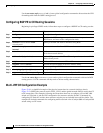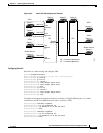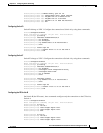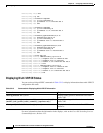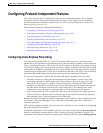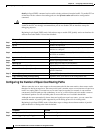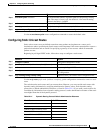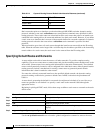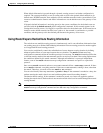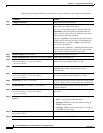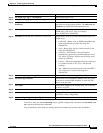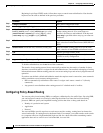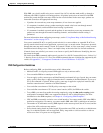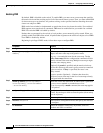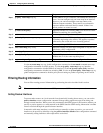
32-72
Cisco ME 3400 Ethernet Access Switch Software Configuration Guide
78-17058-01
Chapter 32 Configuring IP Unicast Routing
Configuring Protocol-Independent Features
Static routes that point to an interface are advertised through RIP, IGRP, and other dynamic routing
protocols, whether or not static redistribute router configuration commands were specified for those
routing protocols. These static routes are advertised because static routes that point to an interface are
considered in the routing table to be connected and hence lose their static nature. However, if you define
a static route to an interface that is not one of the networks defined in a network command, no dynamic
routing protocols advertise the route unless a redistribute static command is specified for these
protocols.
When an interface goes down, all static routes through that interface are removed from the IP routing
table. When the software can no longer find a valid next hop for the address specified as the forwarding
router's address in a static route, the static route is also removed from the IP routing table.
Specifying Default Routes and Networks
A router might not be able to learn the routes to all other networks. To provide complete routing
capability, you can use some routers as smart routers and give the remaining routers default routes to the
smart router. (Smart routers have routing table information for the entire internetwork.) These default
routes can be dynamically learned or can be configured in the individual routers. Most dynamic interior
routing protocols include a mechanism for causing a smart router to generate dynamic default
information that is then forwarded to other routers.
If a router has a directly connected interface to the specified default network, the dynamic routing
protocols running on that device generate a default route. In RIP, it advertises the pseudonetwork
0.0.0.0.s
A router that is generating the default for a network also might need a default of its own. One way a
router can generate its own default is to specify a static route to the network 0.0.0.0 through the
appropriate device.
Beginning in privileged EXEC mode, follow these steps to define a static route to a network as the static
default route:
Use the no ip default-network network number global configuration command to remove the route.
OSPF 110
Internal BGP 200
Unknown 225
Table 32-14 Dynamic Routing Protocol Default Administrative Distances (continued)
Route Source Default Distance
Command Purpose
Step 1
configure terminal Enter global configuration mode.
Step 2
ip default-network network number Specify a default network.
Step 3
end Return to privileged EXEC mode.
Step 4
show ip route Display the selected default route in the gateway of last resort
display.
Step 5
copy running-config startup-config (Optional) Save your entries in the configuration file.



